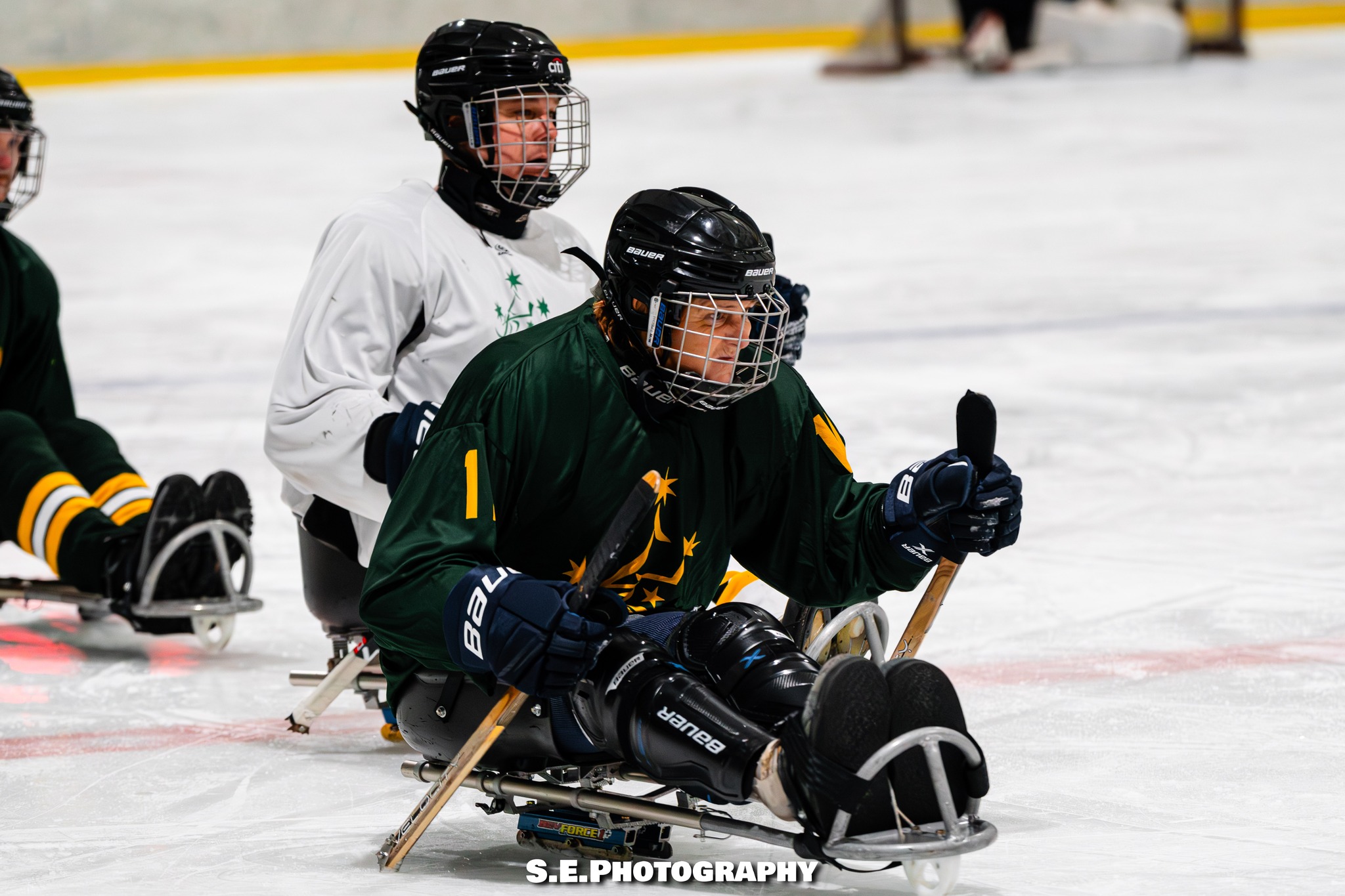Over the past decade, imports have scored almost half of AIHL goals, and we all know they are key to the performance of teams. With teams slowly starting to announce a new suite of imports for the 2024 AIHL season, this raises the question – which other leagues do the most productive players in the AIHL come from?
This is the first in a series of three articles looking at (mainly) import scoring in the AIHL – where it comes from, and comparing across different hockey leagues. To help you understand one area where imports affect the AIHL, we need to understand each players’ scoring performance in a game. This article will therefore include some performance numbers, however you will have seen most of these before, with points per game (P/G) the key measure.
Where do players come to the AIHL from?
Looking at players across the period from 2013 to 2023 sheds some light on the most common recruiting grounds. For continuity in this article, when investigating a player’s league prior to joining the AIHL, I will refer to the previous leagues as their “source” leagues. To compare an import’s performance in their source leagues and their performance in the AIHL, I have looked at the player’s two previous leagues for up to 18 months preceding the AIHL season in question. Brief stints in leagues don’t provide a good representation of an imports ability, therefore these calculations only include players with at least 10 games in each of their AIHL and preceding seasons.
With the vast majority of analysed players being imports (20 of 364 ‘player-seasons’ belong to locals), players joining the AIHL arrive from a wide array of source leagues. However, certain leagues appear more prevalent than others for AIHL imports with the four most popular recruiting grounds being the Southern Professional Hockey League (SPHL – US), Usports (Canadian university hockey), Elite Ice Hockey League (EIHL – UK) and ECHL (formerly the East Coast Hockey League – US/Canada).
Table 1 gives a list of leagues with more than 5 players over the past decade, in order from most to least common.
Table 1: Source leagues by number of AIHL players, 2013 to 2023
| League | AIHL Players |
| SPHL | 59 |
| EIHL | 45 |
| Usports | 45 |
| ECHL | 34 |
| France2 | 25 |
| NCAA III | 20 |
| France | 19 |
| HockeyEttan | 15 |
| Germany3 | 14 |
| LNAH | 12 |
| NCAA | 12 |
| Czech3 | 11 |
| FPHL | 9 |
| DEL2 | 7 |
| Poland | 7 |
| ACAC | 6 |
| BCIHL | 5 |
How do these players perform?
Moving from where they come from, to where the best performers brings us to Table 2. This presents a comparison between player performances in the AIHL and their source league, focusing on the most widely followed leagues throughout the analysis period. For comparison, when including imports from all sources they have averaged 1.39 points per game. The highest scoring players have been from the Oberliga (Germany), ECHL and LNAH (Canada) – in that order. However, with less players coming from the Oberliga and LNAH their locations on the table are highly dependent on a few individual players. For example, if you remove two players from 2023, itself a very high-scoring season, then the Oberliga falls to third spot (the players are Chris Schutz and Patrick Klöpper, both of the Melbourne Ice[i]).
Table 2: Players from other leagues to the AIHL, and AIHL scoring rates
| AIHL Stats | ||||||||
| League | Country | Players | Transfer Ratio (League/AIHL) | GP | G | A | P | P/G |
| Oberliga | Germany | 14 | 0.56 | 293 | 288 | 368 | 656 | 2.24 |
| ECHL | US/Canada | 34 | 0.19 | 570 | 472 | 784 | 1256 | 2.20 |
| LNAH | Canada | 12 | 0.36 | 267 | 210 | 330 | 540 | 2.02 |
| NCAA | US | 12 | 0.19 | 216 | 186 | 217 | 403 | 1.87 |
| France2 | France | 25 | 0.44 | 575 | 388 | 685 | 1073 | 1.87 |
| Ligue Magnus | France | 19 | 0.28 | 389 | 263 | 451 | 714 | 1.84 |
| SPHL | US | 59 | 0.32 | 1265 | 776 | 1333 | 2109 | 1.67 |
| NCAA III | US | 20 | 0.38 | 393 | 280 | 340 | 620 | 1.58 |
| EIHL | UK | 45 | 0.31 | 999 | 593 | 975 | 1568 | 1.57 |
| Usports | Canada | 45 | 0.35 | 986 | 532 | 953 | 1485 | 1.51 |
| HockeyEttan | Sweden | 15 | 0.34 | 342 | 186 | 221 | 407 | 1.19 |
We compare the quality of the source leagues and the AIHL by using the “Transfer Ratio” – the P/G that players average in the source league divided by the P/G in the AIHL. For example, players from the NCAA (US) scored 158 points in 372 games (0.43 P/G) during their NCAA seasons, then the same players scored 403 points in 216 games (1.87 P/G) in the subsequent AIHL season (which gets adjusted to 2.24 P/G to account for shorter games in the AIHL). So the Transfer Ratio for the NCAA is 0.43/2.24 = 0.19.
With these ratios, a lower Transfer Ratio number (closer to zero) indicates a higher P/G for players from that league in the AIHL – so the ECHL ratio of 0.19 shows that players from that league have scored at higher rates than those from the EIHL (at 0.31). [ii]
Are some leagues better ‘value’?
Figure 1 shows a comparison between the P/G scored by players coming to the AIHL, as well as the ‘expected P/G’. The expected score (in the light blue) comes from some comparisons across leagues, and I’ll look at this in more detail in the third article in this series. For now you can think of this comparison as looking at where players coming to the AIHL performed above or below an ‘average’ player from that league to the AIHL would be expected to.
Taking the ECHL as an example, an average ECHL player coming to the AIHL has scored at 0.47 P/G in the ECHL, and using the information from cross-league comparison, would be ‘expected’ to score at 2.79 P/G. However, players coming from the ECHL actually score at 2.56 P/G (in the darker blue) – for a wide variety of reasons, one of which might be that it is very hard to consistently score at almost three points per game!
Another key reason could be that the top-level players from higher-rated leagues are less likely to spend their offseason playing in the AIHL on the other side of the globe. Consequently, if a greater proportion of AIHL imports from these skilled leagues consist of lower-end players, there may be a sampling bias that skews whether players are performing above or below what is expected in the AIHL.
Figure 1: Expected AIHL PPG versus Adjusted Actual AIHL PPG, by source league

So where are the diamonds in the rough?
Comparing actual versus “expected” performance shows fairly clearly that the leagues that are out-performing expectation by the largest amount are France2 (FFHG Division 1 – in one of the more confusing names for a second-division league), NCAA III and the LNAH. These leagues have players scoring at +0.77 P/G relative to the expected rate, +0.75 P/G and +0.37 P/G, respectively, with the top scorers from each of these leagues:
- France2 – Stephen Blunden (CBR, 2015) & Felix Plouffe (CBR, 2023)
- NCAA III – Casey Kubara (CBR, 2022) & Pier-Olivier Cotnoir (NNS, 2013)
- LNAH – Stephen Blunden (CBR, 2017 and 2016)
This result possibly says more about the expectations that the performance. There are two ways to exceed expectations – either have better performance, or have lower expectations – and with these leagues rated as easier to score in than some other leagues (such as the ECHL, for example), they do have lower expectations. Applying this to high-end scorers from leagues with lower expectations, there is a better chance at exceeding those expectations. It also helps to play on high-scoring teams, clearly – with the Brave being the highest-scoring team across the period, and a large contingent of players from the LNAH heading to the Perth Thunder which has historically had high scoring imports, with lots of ice time.
How about rough in the diamonds?
At the other end of the spectrum, leagues which appear to underperform expectations are headed by the UK’s Elite Ice Hockey League, where players score -0.92 P/G relative to the expected scoring in the AIHL (leading scorers are Paul and Tim Crowder at the Ice Dogs in 2019), the (surprising) Oberliga at -0.47 P/G (Chris Schutz – Melbourne Ice in 2023 and Mario Valery-Trabucco – CBR Brave in 2022) and the NCAA (Division 1) with -0.46 P/G (Luke Moffat – Newcastle Northstars in 2015 and Ryan Lough – Sydney Bears in 2018). For the most part, these leagues are victims of high expectations – with the NCAA in particular a very highly rated league, and the Oberliga supplying some of the highest-scoring players (who themselves average 1.38 P/G in that league). The underperformance of EIHL imports is a little surprising, given the high calibre of players in that league.
So what?
So should all teams be scouting the rinks of the French second tier or recent Division III graduates in US colleges? In short, that may not be the most efficient use of time and effort. These leagues may have a few real standout players – but sifting through to find those diamonds in the rough is likely to be harder work than pulling from a larger pool of players in more highly-ranked leagues.
Looking past the expectations, the simple part of which leagues produce the highest-scoring AIHL players are still the leagues that have high-quality scorers. The highest-scoring players come from very strong leagues (ECHL and NCAA) or are high-scorers in solid leagues with strong talent pools (Oberliga), or leagues with a very strong top end talent pool and 2-3 lines that can be described as abject chaos (LNAH). Also, what none of this considers is the style of play, how a player fits into a system (or a locker room), and what the needs of a team are are – as well as a myriad of things like how willing players are to come to Australia, ease of obtaining a visa, timing of availability and the personal circumstances of a player.
So really, good players from good leagues will score heavily in the AIHL. While this aligns with common sense, the ability to confirm this mathematically ensures that we do not overlook crucial factors when scouting for import players.
The next piece will take a deeper dive into methodology of comparing leagues, (published here), and the final one will have the results in comparing 47 different hockey leagues across the world.
Quick note of thanks at the end here to Steven Hughes who has been invaluable at turning my number-relating scratchings into something readable.
[i] Running the same exercise for the LNAH removes the 2015 version of Stephen Blunden (CBR Brave) and Louick Marcotte (2019 – Perth Thunder), with similar results.
[ii] The AIHL number is then adjusted in the seasons with 50-minute games. This adjustment makes the scoring rate of players from the ECHL higher than that of the Oberliga, as more of those players were in the ’50 minute era’ of the AIHL. One issue with this approach is it could be argued that adjusting these numbers may not make sense, as for most imports the increase in game time from 50 minutes to 60 minutes would not mean any further time on ice – as they are already tapped out. However, that type of more philosophical question is being roundly ignored here because it makes life far more difficult.




One response to “AIHL Import Hunting Grounds”
[…] This is part two of a three-part series. You can catch up on part one by clicking here. […]